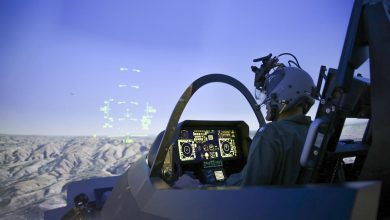As Ukraine builds better drones, do American firms still have a role?

In mid-September, massive explosions erupted in Toropets, a city in eastern Russia near the border with Belarus.
Ukraine had struck a military warehouse, igniting bombs and missiles in what Pentagon officials later said was Russia’s largest loss of Russian ammunition during the war — hundreds of thousands of rounds destroyed.
Almost as important, though, was how Ukraine conducted the strike.
Toropets is more than 300 miles from the Ukrainian border, outside the range of western weapons Kyiv wants permission to fire deep into Russia. Instead, Ukraine used drones it built alone.
Two and a half years into the war, the strike demonstrated a growing confidence in Ukraine’s own ability to design and build drones, perhaps the war’s defining weapon so far. Officials in Kyiv have said they can build weapons that are more precise and resilient than those sent by the West — an argument some American military officials dismissed in private as late as this summer, when speaking with Defense News.
Now even the Pentagon is bullish.
“The Ukrainian-made drones are doing very well,” a senior U.S. military official told reporters last week, speaking on condition of anonymity to discuss the sensitive assessment.
This success is forcing American firms to adapt. When Russia invaded in early 2022, U.S. drone companies sent Ukraine systems by the thousands, both to support its self-defense and to test their gear. Many firms have continued sending them, and even set up shop inside the country.
A more self-reliant Ukraine may change those relationships. American companies are finding different demands for their equipment, and in some case less demand at all. If that’s the case, American companies may struggle to refine their equipment, applying lessons from a conflict many officials say is showing the future of warfare.
“We remain in constant connectivity with the units that are using the systems that we’re providing,” said Chris Brose, chief strategy officer at Anduril, of Ukrainian soldiers. “They are our toughest critics.”
Graduation
Drones have been crucial for surveillance, targeting and strikes on the battlefield throughout the war in Ukraine. In response, its president Volodymyr Zelenskyy has become more intent on bringing them into the military.
In early October, Zelenskyy said that Ukraine can build up to 4 million drones each year and has contracts to build 1.5 million in 2024.
Many of these are small, first-person-view, or FPV, drones — not that different than what people can buy in the commercial market, said Sam Bendett, an expert at the Center for Naval Analyses who studies the use of drones in the Ukraine war.
Still, he said, Ukraine is also developing more high-end equipment that can take on more daring missions, as shown by the strike on Russia’s ammunition depot.
This spring, Ukraine started attacking oil fields deep into Russia in an attempt to pinch a key source of revenue for the Kremlin. While Kyiv was using its own drones to do so, the targets were civilian, rather than military, and had less intense jamming around them to stop incoming attacks.
American officials now say Ukraine has graduated past that level.
“There certainly are capability enhancements that have happened very rapidly,” the senior military official said. “Also, they are getting more sophisticated in their tactics, techniques and procedures.”
With that success, though, Ukraine needs fewer drones built by foreign partners. And American companies are noticing.
“They’re probably going to do a better job of meeting their own requirements than nations are going to be able to do for them,” Brose said of the small drones Ukraine is building in high volumes.
Instead, Brose argued that firms like Anduril are better placed to help Ukraine with “complementary capabilities” that can help make drones built in the country survive longer. He didn’t specify what those weapons could be but argued they could help protect drones against Russian jamming — which is only getting more intense as Moscow also invests in drones and electronic warfare.
‘Open market’
This is not to say that Ukraine no longer wants or needs American-made drones.
Skydio, a California-based company on contract with the Army, says it has sent more than 1,000 drones to Ukraine in the last two years. The company has since hired a small team of engineers and other employees in the country to adjust its own equipment on a timeline closer to front line needs.
Earlier this year Ukraine requested a further 8,000 of Skydio’s top-tier drone, the X10D, though the company is still trying to get enough money from other countries to send them.
Mark Valentine, an executive at Skydio, said that his firm has noticed Ukraine needing less Western support on smaller and larger drones — ranging from commercial-style weapons to precise munitions.
That said, “the microelectronics and some of the AI capabilities that we’ve been able to integrate on a drone have not necessarily been reproduced at scale in Ukraine,” Valentine said. “I still think that is a sweet spot.”
This fall, U.S. President Joe Biden approved a $2.4 billion package of long-term aid for Ukraine, including what a senior defense official called a “significant investment in Ukraine’s drone capability.” The aid will eventually help provide thousands of aerial drones and smaller components to build more inside Ukraine.
The assistance reflects a new posture for the Pentagon and U.S. defense firms — moving from only sending Ukrainians their drones to helping them design and build them.
“Ukrainian drone companies in many different domains are going to be a global, legitimate player,” said Wahid Nawabi, head of the drone company Aerovironment, which has sent Ukraine thousands of systems during the war.
Aerovironment, Nawabi said, still has many systems in Ukraine and continues to get data from front-line soldiers using them. Even more, he said, his firm was working to partner with these counterparts to design and build drones together.
Ukrainian operators, he said, demand the best, and if home-grown firms are providing that, perhaps American ones can join them.
“It’s an open market for competition,” Nawabi said.
Noah Robertson is the Pentagon reporter at Defense News. He previously covered national security for the Christian Science Monitor. He holds a bachelor’s degree in English and government from the College of William & Mary in his hometown of Williamsburg, Virginia.







